I don't think anyone needs to be told how popular Chinese have become Android smartphones over the past couple of years. You will find many attractive models on the market, but among them it is worth noting several excellent solutions that are noticeably ahead of their competitors due to technical characteristics, software features, case quality, appearance and reasonable price.
This review presents not just flagship devices, but 5 devices that were able to stand out from other representatives of their class. We will try not to dwell on each of them for a long time, but tell only the most important things.
The phones from today's review are offered by any online store of Chinese smartphones at http://price.ua/kitajskie_telefony/ccid13.html.
Founded at the end of 2013 by people from Oppo, OnePlus introduced the world to a smartphone that the press immediately dubbed the “flagship killer.” And it was impossible not to agree with this slogan: top-end hardware, stylish appearance, great camera, CyanogenMod firmware based on latest Android and all this for a price tag of $300. Many pre-orders immediately arrived and the company simply could not ensure such mass production of the smartphone, so an invite system was introduced through which the device is still being sold.
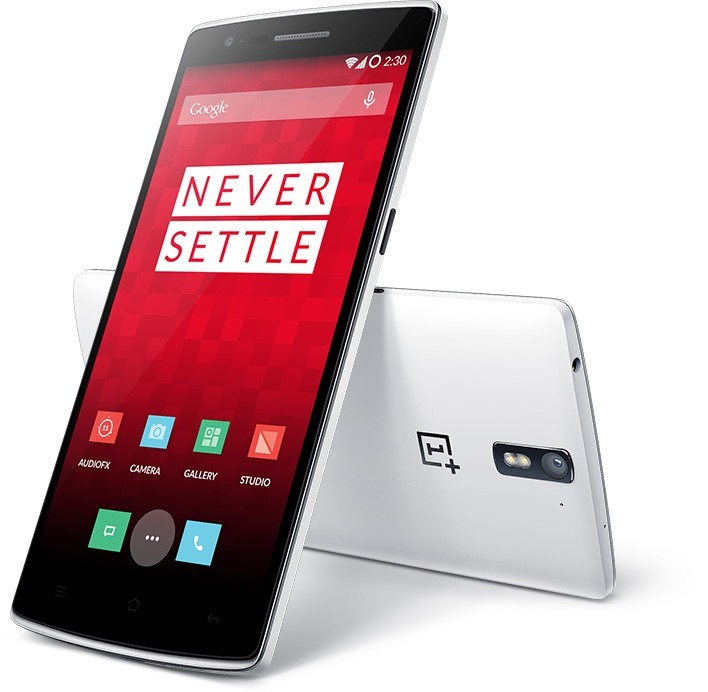
In civilized countries, One is officially sold in OnePlus branded stores, and the company recently made Tuesday the day of free sales of the phone. In this regard, the device has become cheaper in our stores, as it has become easier to purchase it. In addition, no one is stopping you from ordering it for delivery in foreign online stores.
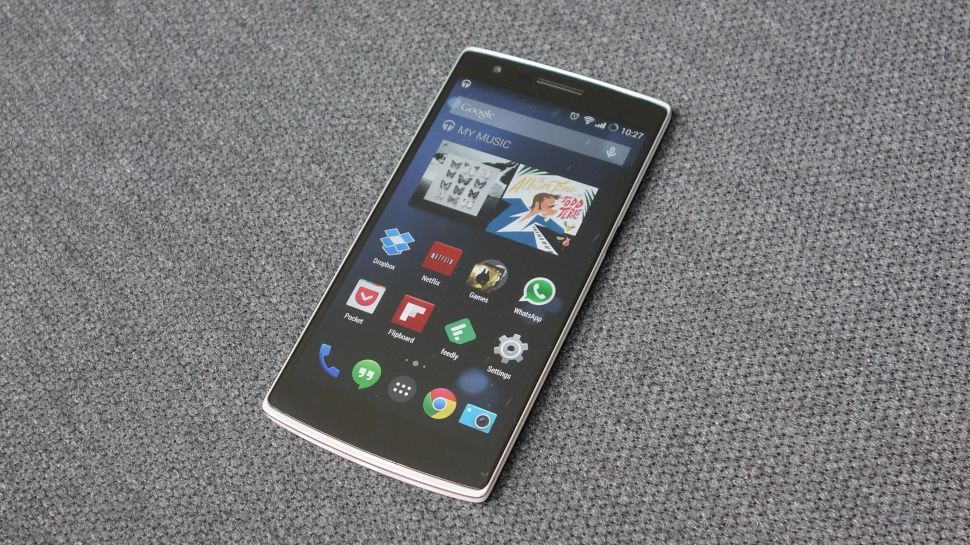
Now let's talk about the smartphone itself. OnePlus One is a truly premium device, in no way inferior to the flagships of famous manufacturers. Even the box and accessories look amazing. As for the characteristics, everything is no less attractive here: 4-core Snapdragon 801 processor, Adreno 330 graphics accelerator, 3 GB random access memory, 16 GB or 64 GB built-in without expandability, 5.5-inch Full HD display from JDI, 3100 mAh battery and a good 13-megapixel camera with a Sony Exmor IMX214 CMOS sensor. By the standards of 2014, this is one of the most attractive smartphones on the market, and given the cost, it will remain so for a long time.

The smartphone comes with either CyanogenMod or ColorOS firmware. The second is designed for the Chinese market and although it has some interesting features, it is actually very colorful and does not support the Russian language. If you get a smartphone with it, then it’s better to immediately reflash it to CyanogenMod yourself. Soon the device will receive Android 5.0 Lollipop, and not only the CyanogenMod 12S firmware, but also the new proprietary Oxygen OS.
Well, it’s worth saying that OnePlus One is one of the leaders in the number of custom firmware, so if you like to try something new, then OnePlus One is definitely your choice.
Meizu MX4 and Meizu MX4 Pro
Meizu's first products made a significant contribution to the popularization of Chinese smartphones around the world. Compact, beautiful, productive devices have become known far beyond China. These were exactly the devices that were really lacking in the Android smartphone market during the “diagonal race” - flagship, but at the same time comfortable in the hand.
After several successful models the company followed the lead of the market and released the 5.1-inch Meizu MX3, which became no less popular than the previous devices in the series. Apparently, Meizu set a course for increasing diagonals and introduced Meizu MX4, and then Meizu MX4 Pro with screens of 5.36 inches and 5.5 inches, respectively.

The first feature of both smartphones is their chic appearance and thin frames around the screen, making the cases for the regular MX4 and Pro versions very compact, considering the diagonals of the displays. At the same time, both devices turned out to be very wide due to the non-standard aspect ratio of 5:3 (15:9).
The smartphones run Flyme OS, which is unlikely to feature Android - the Chinese tried to replicate iOS and they succeeded. At least externally, the firmware is very similar to Apple's OS. Control is based on gestures and this often simplifies working with such large devices. There is only one control button; in Meizu MX4 Pro it also acts as a fingerprint scanner. It is also worth mentioning that the appearance of many elements of Flyme OS can be customized.
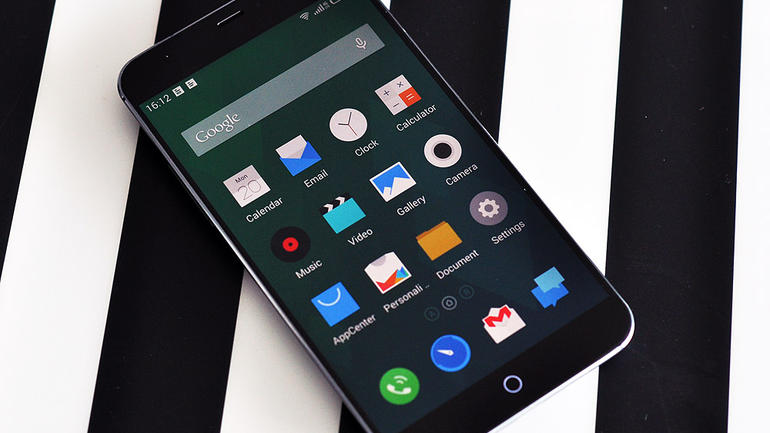
The main cameras of Meizu MX4 and MX4 Pro are almost the same: 20.7 megapixels, 5-lens optics with f/2.2 aperture, Sony Exmor IMX220 sensor and dual LED flash of different shades, but the Pro version uses sapphire glass instead of Gorilla Glass. Video devices can record in a maximum resolution of 3840 x 2176 pixels (UltraHD 4K) at 30 fps. It is worth saying that the camera in smartphones is one of the best on the market.
The front cameras here are completely different: the younger model uses a 2-megapixel Sony CMOS Exmor R module, and the older one has a 5-megapixel OmniVision OV5693 module.
Meizu MX4 received an 8-core processor Mediatek MT6595, made using ARM big.LITTLE technology: 4 Cortex-A17 cores at 2.2 GHz, 4 Cortex-A7 cores at 1.7 GHz, and they can work simultaneously. Other technical characteristics: PowerVR G6200 graphics accelerator, 2 GB of RAM, 16/32/64 GB of internal memory without MicroSD support, Full HD screen and 3100 mAh battery.

Meizu MX4 Pro has an 8-core Samsung Exynos 5430 processor on board, again made using technology ARM big.LITTLE: 4 Cortex-A15 cores at 2.0 GHz and 4 Cortex-A7 cores at 1.5 GHz. The smartphone received a Mali T628 MP6 graphics accelerator, 3 GB of RAM, and a screen with 2560 × 1536 pixels and a 3350 mAh battery.
In synthetic tests, the younger model performs better; they cope equally well with the system, but in some games the Pro version has the advantage - after all, Samsung’s solution is more popular than MTK’s and, accordingly, the optimization is better.
In winter, Meizu presented a budget new product with a gorgeous screen, very good hardware, the proprietary Flyme OS shell and an advanced camera from Samsung. At the same time, the price of the device was $200-250 (depending on the amount of memory) - what else do you need from a cool mid-level smartphone?

Meizu M1 Note has the following technical characteristics: 8-core (ARM Cortex-A53) 64-bit MediaTek MT6752 processor clocked at 1.7 GHz, Mali T760 MP2 graphics accelerator, 2 GB RAM, 16/32 GB internal memory non-expandable and battery capacity 3140 mAh.
The Meizu M1 Note uses a 13-megapixel Samsung sensor with a five-lens lens with an f/2.2 aperture covered with Gorilla Glass 3. The camera settings menu is identical to the MX4 and MX4 Pro. The photo quality in the M1 Note is very good good level, as for its class. Video is recorded in Full HD at 30 fps.
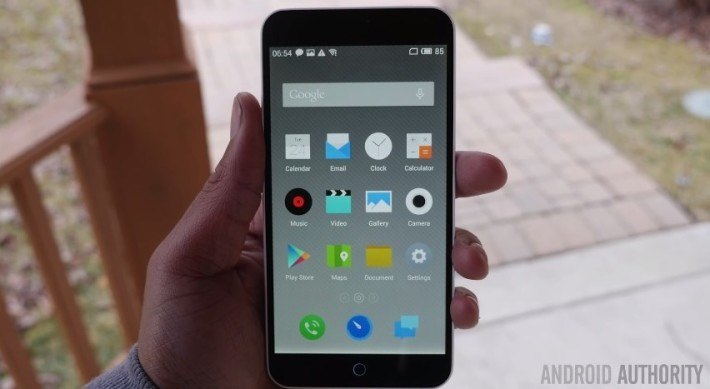
The front camera uses a 5-megapixel OV5670 sensor with a four-lens lens with an f/2.2 aperture and a viewing angle of 69 degrees.
Differences in system operation this device and there are no older models, so everything that is written about the MX4 and MX4 Pro also applies to the M1 Note. In addition, this is the company's first smartphone with dual SIM cards.

It’s also worth saying a few words about the screen. The device received a 5.5-inch IPS display with a resolution of 1920 by 1080 pixels from Sharp, manufactured using IGZO technology. As protective glass Corning Gorilla Glass 3 is used. The screen is one of the strongest points of the smartphone: wide viewing angles, rich, clear pictures, natural color rendition and high brightness.
In general, for the money they ask for Meizu M1 Note best smartphone you won't find it.
The Chinese company Xiaomi has been among the TOP 5 most popular smartphone manufacturers in the world for several years. In addition, it produces awesome accessories: headphones, fitness bracelets, external batteries, TVs and set-top boxes. Last year, Xiaomi introduced its first tablet and it turned out to be no less successful than other electronics from this Chinese brand. To be honest, I don’t remember a single product of the company that was not successful and I have already been convinced of its excellent quality several times Xiaomi products from personal experience.
![]()
Last year's flagship Mi4 fully confirms my words - it is a compact device (by today's standards) with top-end hardware, a screen, a camera and the proprietary MIUI shell. At the same time, the official price is very pleasing - $400 for the version with 64 GB of internal memory.
The technical characteristics are as follows: 4-core Snapdragon 801 processor, Adreno 330 graphics accelerator, 3 GB of RAM, 16 GB or 64 GB of internal memory without expandability, 5-inch Full HD display made by Sharp covered with tempered glass Gorilla Glass 3 and a 3060 mAh battery . The smartphone has a main 13-megapixel 6-lens camera from Sony, capable of recording video up to 4K, and front-camera at 8 megapixels it will take very good selfies.

The MIUI shell is easy to customize and also has many interesting features and themes (both paid and free). In addition, there are more than a dozen original replacement back covers for Mi4. Therefore, there are simply no real shortcomings in the smartphone and I can safely recommend it to everyone.
Xiaomi Mi Note and Xiaomi Mi Note Pro
Although most of the smartphones in our review are large devices, they cannot compare with the Xiaomi Mi Note and Xiaomi Mi Note Pro phablets. These recently introduced devices are positioned by the company as flagships in Xiaomi products, so they simply could not help but be included in our review.

What do the younger and older models have in common? Both devices received a 5.7-inch screen, a 13-megapixel Sony IMX214 CMOS camera with an f/2.0 aperture and an optical stabilization system (OIS), support for two SIM cards, 64 GB of internal memory and a 3000 mAh battery.

Their other characteristics differ significantly. Mi Note Pro runs on a top-end 8-core Qualcomm Snapdragon 810 processor (4 Cortex-A53 cores with a frequency of 1.5 GHz and 4 Cortex-A57 cores with a frequency of 2 GHz) with an Adreno 430 graphics accelerator, has 4 GB of RAM and a screen with QHD resolution (2560 x 1440 pixels). The regular Note received a Snapdragon 801, 2 GB of RAM and a Full HD display.
conclusions
There are a lot of good Chinese smartphones and choosing the 5 best ones was not easy. I tried to talk in as much detail as possible about the main features of each of them and I hope you liked it. If you have your own thoughts about cool Chinese devices that were not included in our TOP, then you are welcome to comment.
In conditions of a permanent crisis, buying a smartphone or tablet from China seems like a good way to save money and get a device with flagship characteristics for a third of the price of the same one, but made by “first-tier” manufacturers. But where do these fabulous savings come from and why are Chinese devices so cheap in general? Let’s try to find out, and at the same time talk about how to choose the right one chinese smartphone and is it worth doing this when last year’s flagships from famous manufacturers are on sale.
If you don’t take into account the very cheap nonames and take a closer look at devices in the price range of $150–200, then you can find a lot of really good models at first glance. Good quality assemblies, modern components, bright screens with excellent color rendition - the Chinese have learned how to make good products, saving on labor, design (which is simply copied), advertising and direct distribution without intermediaries. However, if you dig deeper, it turns out that everything is not so rosy and sometimes the great Chinese thought goes too far in the desire to cut the price of the device a little more.
Everyone lies
This is not to say that absolutely everything Chinese manufacturers tend to overstate the characteristics of their devices or present information in a cunning way in such a way as to create the desired impression and keep silent about something. However, deception cannot be completely ruled out. Trust but check!
I will give a few examples from my own practice. Ulefone Be Touch 2. The manufacturer lied twice: by falsifying the version of Android that the device runs on, and by indicating an overestimated battery capacity (in reality, it remained exactly the same as in the first model, changing only the number printed on the wrapper).
How can you falsify the Android version? It's very simple: write in system file build.prop version 5.1. A quick, dirty and cheap way to "upgrade" from the actual 5.0 version. Ulefone Be Touch 2 is far from the only device that comes with a “fake” version of the system. Read, look at reviews - independent reviewers rarely miss such things.
Do you think that not everyone lies, but only “basement” manufacturers? No matter how it is! Lenovo, a well-known and large concern, does not hesitate to mislead the buyer. Take the Lenovo K3 Note, for example. In most foreign reviews we see the standard “the screen is good, bright, the colors are rich, everything is excellent.” But reviewers from the iXBT website are not so gullible. Having taken the time to take a photo of the smartphone screen, experts discovered that instead of the stated resolution of 1920x1080, the device has a cheaper matrix with a resolution of 1920x720. Admire it.
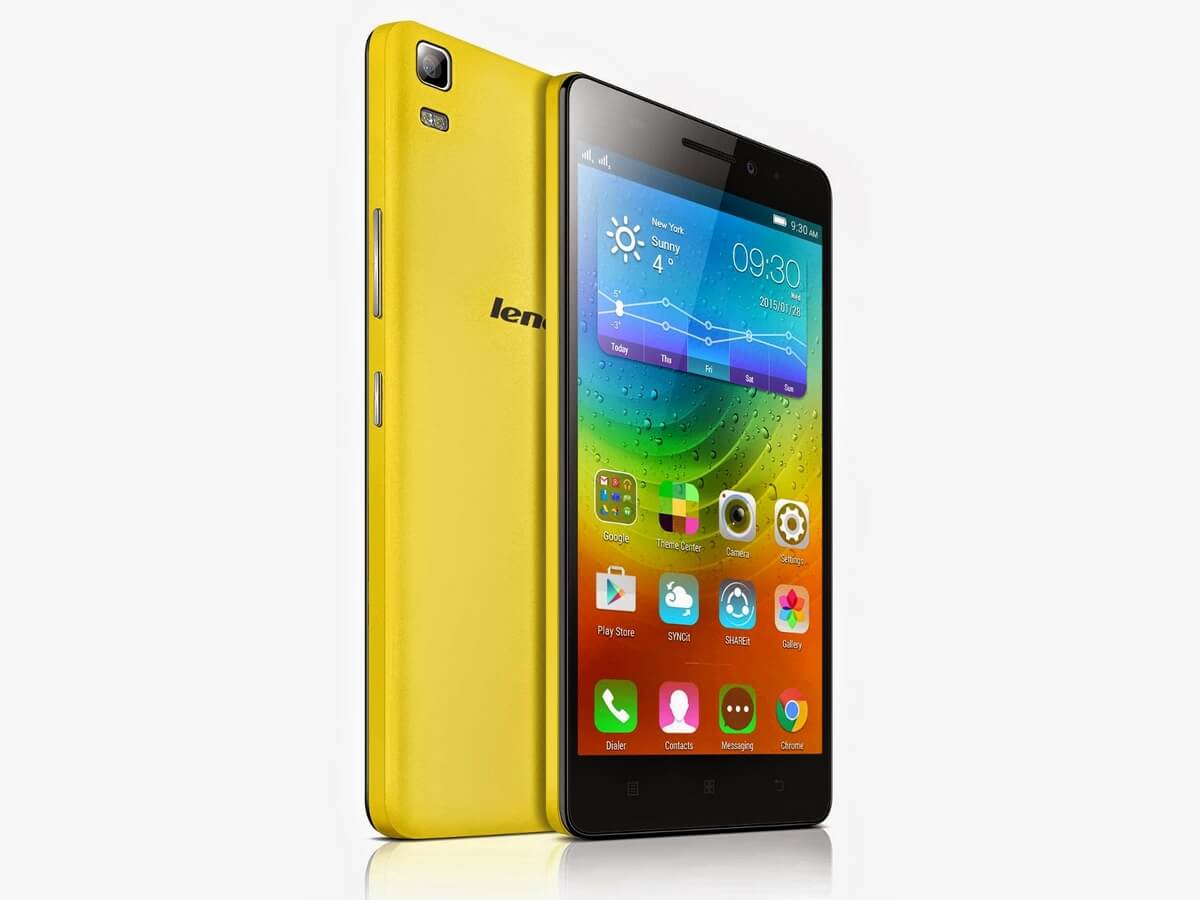
Do you think it's an isolated incident? No! Let's take for example Lenovo tablet Yoga Tablet 2 (8″) in Android versions. On the official American website of the company, the device characteristics indicate support for memory cards up to 64 GB (quote from the site: Supporting Micro SD card up to 64GB).
And everything would be fine, but there is a subtlety. After purchasing a 64 GB card and inserting it into the tablet, you will see a prompt to format it. What is it, why? But the fact is that according to the officially accepted standard, memory cards with a capacity of 64 GB or more must (must, damn it!) comply with the SDXC specification. And it clearly and clearly, in plain English, prescribes the type of file system required for use on such cards: exFAT.
And again, everything would be fine, but using exFAT requires purchasing a license from its developer, Microsoft. But I don’t want to pay money. This is how devices appear that are hardware compatible with cards in the SDXC format, but do not support the standard for them file system. First-tier manufacturers honestly indicate compliance with the SDHC standard (memory cards up to 32 GB), and the fact that the user, at his own peril and risk, can format it in FAT32 and successfully use it in such devices is like a free bonus. But you can hardly upload a movie in HD to this card; File size in FAT32 is limited to 4 GB.

And there are also fakes
Creative presentation of specifications is one thing. What about outright fakes? iPhone clones - of course, it is usually not difficult to distinguish them, although Chinese craftsmen managed to assemble at least one device that runs on real iOS. But fakes from “basement” manufacturers look like other Chinese brands- for example, Xiaomi or Lenovo - is another matter, much more unpleasant.
And even without backdoors
Even if the phone arrived without built-in dubious “add-ons”, it is not at all a fact that it has original firmware. Take, for example, devices produced by Xiaomi. Good hardware, high-quality original firmware, good value price quality. But not all of the company’s models are intended for sale outside of China. Not intended, but sold.
For devices intended for distribution exclusively in China, the company releases the corresponding firmware - Chinese. Sometimes without any translation into other languages, even into English, but certainly without Russian and without Google services.
But this fact does not stop cunning sellers from flashing into such devices... and who knows what they are flashing. By someone and somehow modified firmware with partial translation of hieroglyphs and somehow installed Google services. These firmwares, in addition to their general dubiousness, have one global drawback: over-the-air updates will either not arrive at all (this is the best case scenario), or, once they arrive, they will turn the device into a “brick.” So back to fastboot, custom recovery and other delights (by the way, it may not help, since international firmware authored by the manufacturer, I repeat, is not available for all Chinese devices).
And then there is such a thing as SalesTrack. A very recent example: Micromax Bolt D303. Fresh, clean, factory firmware Micromax phone intended for sales in India sends an SMS to an Indian short code immediately after turning on the phone. This is how the device is activated, but for a Russian-speaking user it will cost a pretty penny.
Optimization. Or lack thereof
To operating system worked more or less smoothly, you need specific drivers unique to each device, and correct setting all firmware components - from the core to the shell. Unfortunately, optimization is an infrequent guest in Chinese devices. Yes, individual manufacturers with a small model range(a nod to Xiaomi, Meizu, Oppo and OnePlus) can afford to optimize the firmware. As for the semi-basement and basement offices churning out handicrafts and forgetting about them six months after their release, there will be a lottery. If you're lucky, everything will work more or less smoothly and stably. If you're unlucky (as in the case of the Ulefone Be Touch 2 described above), it will be a nightmare.
Of course, everyone has problems with optimization. The Nexus 9 tablet, released with the then new version of Android 5.0, worked extremely poorly. The situation was partially corrected only with the release of update 5.1.1, but the tablet revealed its full potential only with the release of Android 6.0. Or the flagship LG G Flex 2, which became the first device on the Snapdragon 810 platform. There were lags and slowdowns. And disappeared with the exit firmware version Android 5.1.1. How are things going with firmware updates from Chinese manufacturers?
And there are also updates. Or they don't exist
After-sales support for devices using firmware updates is an established standard practice accepted among first- and even second-tier manufacturers. But basement crafts, as a rule, are doomed to work with the firmware that the manufacturer installed on them. In the best case, you will receive one or two minor updates that correct bugs found within the pre-installed Android branch. Simply put, if your device came with Android 4.4 KitKat, you probably won't be able to upgrade to 5.0 Lollipop.
What is the reason? Developing new firmware based on the latest version of Android, of course, costs money. You can save a lot of money on after-sales service, which is what the Chinese are famous for.
But is that the only thing? Unfortunately no. Very, very many Chinese devices are equipped with chips produced by the Chinese concern MediaTek (MTK). Integrated solutions produced by MTK differ from analogues, for example, from the American Qualcomm, in that the manufacturing company may release drivers for a certain set of system logic with support for the latest version of Android - or may not. Can provide to smartphone manufacturers source codes- or may not provide it. Guess in three tries whether MTK is famous for supporting its chips with drivers?
For manufacturers like Allwinner and Rockchip, you can usually forget about any support as soon as you receive the device. No, the manufacturer can try to do something with updates and without the latest driver versions, but...
Not long ago, the author of this text tested a tablet based on the RK3188 chip. Four Cortex A9 cores - a good option! But the tablet worked not just poorly, but extremely poorly. Even scrolling a simple web page experienced severe delays and jerks. Obtaining superuser rights and carefully optimizing everything possible did not help. The explanation turned out to be very simple: Rockchip provided the tablet manufacturer with drivers for Android 4.2, and the manufacturer wanted to release the device under Android control 4.4 KitKat. Released. It didn't make it any better. Need I say that there have been no firmware updates since then?
And everything would look logical if it weren’t for the fact that some manufacturers (Meizu for example) successfully produce devices based on MTK chips and just as successfully support them for a long time. Here, however, we need to look deeper. A closer look at the FlyMe OS firmware shows that active firmware development is taking place within the framework of a specific Android branch. The global transition from Android 4 to version 5 within FlyMe OS happened not so long ago and with a delay of almost a year since the release of Android Lollipop.
No, what should I take?
If we're going to order something from an online store anyway, let's turn 180 degrees and look west instead of east. At least for these trading platforms, like eBay and Amazon. And we will be surprised to discover that the flagships of last season are sold for half, or even a third of the price compared to the moment of announcement. What can you look for for your money - and not from China?
The continuation of the article is available only to subscribers
Option 1. Subscribe to Hacker to read all articles on the site
Subscription will allow you to read ALL paid materials on the site, including this article, for the specified period. We accept payment bank cards, electronic money and transfers from mobile operator accounts.
